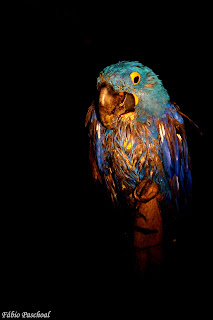 |
Salamanta ou Jibóia Arco-íris/ Rainbow Boa
(Epicrates cenchria)
|
Nome: Salamanta ou Jibóia Arco-íris
English name: Rainbow Boa
Family: Boidae
Species: Tamandua tetradactyla
IUCN Status: not on the red list
IUCN Status: not on the red list
Pictures taken at: Amazon
Natural History: It's a fantastic animal! Depending on the way that the light is reflected by its scales it's possible to see the colors of the rainbow! That gives the name of the snake: Rainbow Boa.
This snake prefers to go out during the night to hunt lizards, birds and small rodents that are caught with its sharpen teeth that are turned back, which prevents a possible scape. After the attack it evolves the prey in a deadly embrace, pressing more with each breath until the victim's heart stops beating.
É um animal fantástico!!! Dependendo do modo como a luz é refletida por suas escamas é possível ver as cores do arco-íris que dão origem ao seu nome. A Jibóia arco-íris é uma cobra que prefere sair à noite para caçar lagartos, aves e pequenos roedores que são apanhados com seus dentes afiados e voltados para trás impedindo uma possível fuga. Após o bote envolve a presa em um abraço mortal, apertando mais a cada expiração até que o coração da vítima pare de bater.















